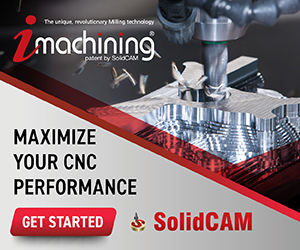Get More Out of Your Machining with This Cutting Strategy
Sponsored ContentRadial chip thinning, also known more broadly as constant chip load machining is an alternative cutting strategy designed to better optimize machining speeds and feeds. Here’s how.
Share
The key to more productive machining is using milling and turning tools in the ways they were intended, at optimum feeds and speeds and, most importantly, optimum chip loads.
For conventional machining, tool manufacturers typically recommend cutting parameters assuming a stepover of 50 percent of the tool diameter. Feeds and speeds are adjusted accordingly to deliver an ideal chip load. The alternative is using radial chip thinning (RCT), known more broadly as constant-chip-load machining or high-efficiency machining.
With radial chip thinning, the stepover is reduced, which, of course, also reduces the thickness of the chip under the same feed rate. To compensate, the feed rate must be increased accordingly to yield the desired chip thickness.
The other big difference with this cutting strategy is in the depth of cut. A traditional approach is to step down 25 percent of tool diameter. With RCT, the depth of cut can be as much as two to three times the tool diameter, depending on the tool. The deeper depth of cut provides much better utilization of the tool’s entire cutting edge, rather than just always cutting with the end of the tool. And since the side load on the tool is greatly reduced (from 50 percent stepover to around 15 percent or less) there is also less load on the spindle, which will save wear and tear on your machines.
Best of all, this combination of faster feeds, speeds and deeper cuts can typically improve metal removal rates by 60 to 70 percent or more compared to conventional machining practice…READ MORE.









.jpg)













